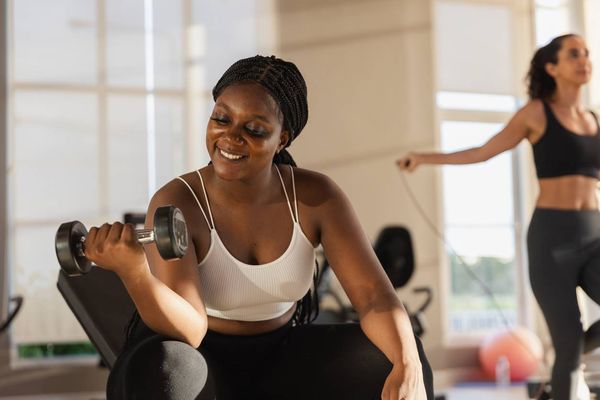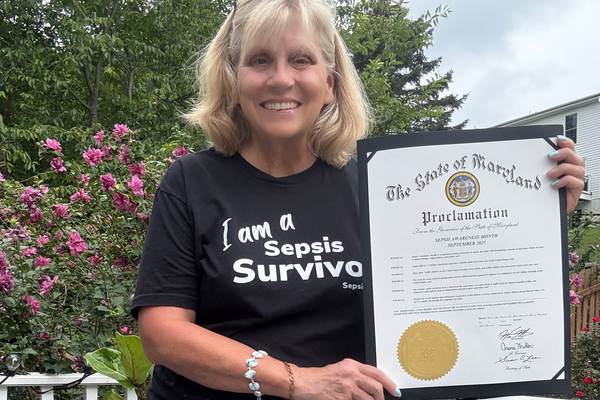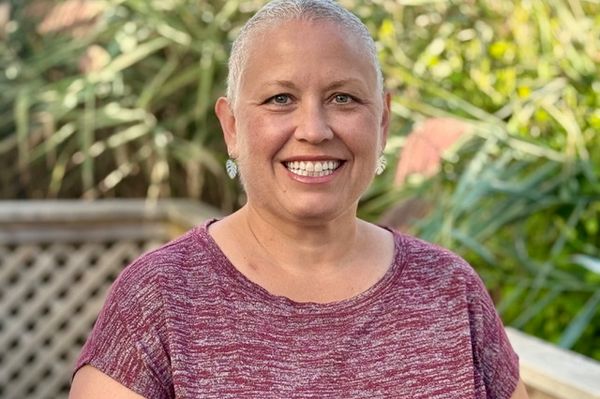Ashley Drake is a #teamHealthyWomen Contributor and this post is part of HealthyWomen's Real Women, Real Stories series.
Exercise classes provide an energetic and community-driven approach to fitness. They can be a whole lot of fun, but can also be intimidating, especially for those living with chronic pain. How can you be sure that your joints will tolerate the class you are taking? Which type of class will be best to help reduce the pain you already have?
Pick a Class That Is Best Suited for Your Needs
Remember that any exercise class has the potential to cause harm when not approached in the right way. Be sure to consult with your health care provider before starting any new exercise regime. Also, take the time to find a skilled and compassionate class instructor as this will be key in ensuring your success and safety.
Choose Low-Impact Exercises
The exercises classes listed below are generally considered low impact, meaning they will not involve jumping, pounding or other movements that may cause excess stress on your joints.
1. Pilates
Why Pilates?
Pilates is focused around one main goal: to strengthen your core. It utilizes precise, controlled movements. This is ideal for those with chronic pain as this attention to form can decrease your risk of injury or joint aggravation.
What diagnoses or conditions are suitable for a Pilates class?
Pilates is great for those with low back, pelvic or hip pain. This class may also be useful for those who have difficulty tolerating frequent positional changes. The majority of the class will be spent lying on your mat in varying positions.
What is a reformer? Should I take a Pilates reformer class?
With a Pilates reformer, you lie on your back and pull on handles that have resistance distributed through your arms or legs. It will incorporate many of the same movements that you do in a traditional Pilates class but with added resistance. The set-up of the reformer assist to stretch your muscles and allows you to gain more kinesthetic awareness (knowledge of where your body is as they move through space). Both traditional and reformer Pilates classes will help you strengthen your core, but it is best to have a solid foundation in Pilates prior to trying the more advanced exercises required with the reformer.
2. Yoga
Why yoga?
Ah yoga, possibly my one true and undying love. Yoga helps with so many things—both the mind and body—but here are just some of the benefits:
- Lengthen muscles and improve overall flexibility
- Full body strengthening
- Improved balance and core stability
- Relaxation with emphasis on proper breathing techniques
- Mindfulness and improved concentration
What diagnoses or conditions are suitable for a yoga class?
Yoga is excellent for those with widespread muscle-related pain, low back pain, hip pain, knee pain and many more. Yoga-based exercises can be catered to most musculoskeletal conditions. If you are able to afford a private lesson or work with a physical therapist who is also certified in yoga therapy you can reap amazing benefits for your specific condition, while ensuring that your plan is as individualized as possible.
How do I choose what type of yoga class to take?
Once you choose a studio, your next challenge will be to select a particular class. Modern day yoga can envelop a huge range of classes—not all of which are fully rooted in traditional yogic practices. The most important thing is to find a class that resonates with you and that you find enjoyable. If you are new to yoga, it is best to start with a slow-moving class with emphasis on proper form so that you become acclimated with the varying postures, and aware of possible variations for more challenging poses. Here are three types of classes to try:
- Yin yoga: focuses on fewer postures held for longer times, allowing increased familiarity and time to play with modifications
- Iyengar yoga: emphasizes proper form and alignment; excellent for learning the use of props and modification of poses
- Restorative yoga: emphasizes relaxation, using props and spending several minutes in each pose
3. Spin
Why Spin?
My first instinct is to tell you that the main thing spin class helps with is getting you to sweat. If sweating buckets gives you workout satisfaction, then this is the class for you. Spin is a great cardio workout and is excellent for increasing lower body strength. Most classes will not be suitable for those who cannot tolerate rigorous cardio, loud music, flashing lights, or a hot workout environment.
What diagnoses or conditions are suitable for a spin class?
Cycling in general is great for strengthening the muscles around the hip and knee joints. Don’t be afraid of keeping the resistance low and skipping some of the “jumps” off the saddle to reduce the pressure on your knees. If you are a beginner, make sure to ask the instructor if your bike is set-up correctly for your size.
4. Barre
Why Barre?
When I first read about Barre, I figured it might be kind of…easy. I was wrong. The majority of exercises utilize your body weight without the frills of extra equipment and props. The exercises will challenge your balance and bring on the muscle burn. This is a great full body, low impact workout.
What diagnoses or conditions are suitable for a Barre class?
Conversely to Pilates, a Barre class will be spent primarily in standing position. So if getting to and from the ground frequently does not appeal to you, this might be your jam. Barre can be beneficial in improving ankle stability, reducing knee pain, and improving hip and core strength.
The bottom line: Find a class that makes you love to move.
If I could go to a class every day I would, but unfortunately for most of us, this is not a financially realistic plan. I encourage you to try to budget for at least one exercise class per week. There really is no substitute for the energy in the studio, the cues from a skilled instructor and the camaraderie of exercising as a group. Find a routine and stick to it.
Finally: Respect your body and listen to its wisdom.
Remember to always exercise within your own limits and listen to your body. Be kind and compassionate to yourself during any workout. You are the only person that knows what you are feeling—no one else in the room has a say on what you do or do not participate in. Take ownership of your workout and respect your limitations. Feed off the positive energy that an exercise class provides. Learn to enjoy the invigorating power of the group, without getting lost in your own competitive nature.
With a regular and effective participation in an exercise class you will make progress. It may not be fast, it may not be easy, but you WILL begin to notice positive changes in your mind, body and spirit. While consistency is important, variety can also help to keep you on track. Muscle soreness is normal after any rigorous workout, so changing the type of class you take can mix it up and utilize other muscles.
Ashley Drake is a writer and physical therapist who has lived with undiagnosed chronic, widespread pain for over a decade. She started her blog, The Chronic Lifestyle, with the goal of providing resources, support and guidance for those living with a chronic illness. She is currently training to become a Pelvic Floor Specialist so she can help others living with chronic pelvic pain. When she is not working, Ashley enjoys reading and spending time outdoors with her rescue dog, Cinnamon.






